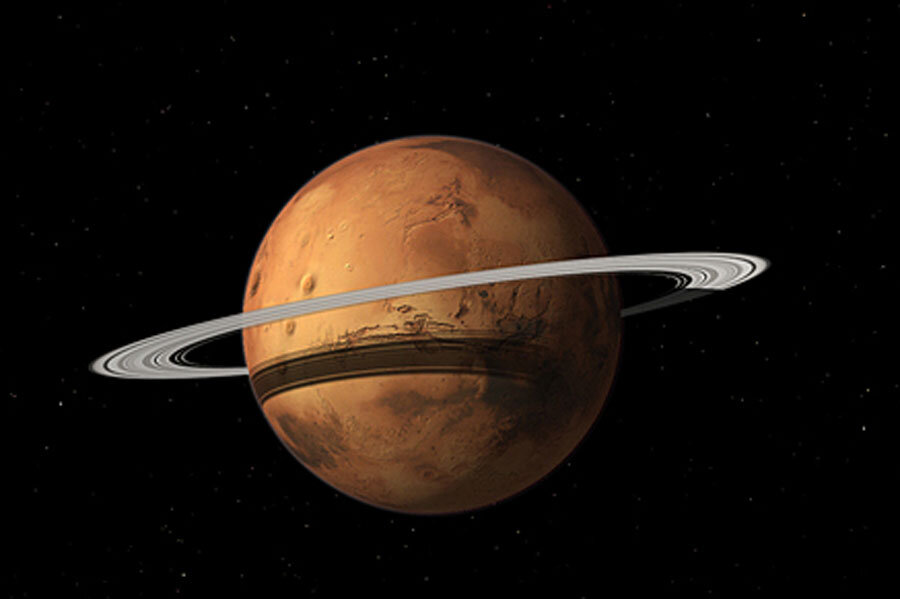Long engagement: Phobos promises Mars a ring, in 10-40 million years
Loading...
Planetary rings swirl around all the gas giants, Jupiter, Saturn, Uranus, and Neptune, but the little Red Planet might join the ringed ranks.
Mars’ largest moon, Phobos, is on track for destruction as the Red Planet’s gravity pulls the moon towards it. That event could produce a disk of debris forming a ring for its host planet, according to a new study.
Phobos’ orbit around Mars sets the moon’s demise in motion. “While our moon is moving away from earth at a few centimeters per year, Phobos is moving toward Mars at a few centimeters per year, so it is almost inevitable that it will either crash into Mars or break apart,” one of the study’s authors, Benjamin Black said in a news release.
The scientists looked at the composition of Phobos to estimate which outcome was most likely. They found that the moon will be unable to hold together as it is pulled towards Mars, as reported in their paper published Monday in the journal Nature Geoscience.
"The main factor affecting whether Phobos will crash into Mars or break apart is its strength," Tushar Mittal, a graduate student at the University of California, Berkeley and the other study author, told Space.com by email. "If Phobos is too weak to withstand increasing tidal stresses, then we expect it to break apart."
Phobos is made up of fractured rubble already. Dr. Black likened the moon’s destruction to pulling apart a granola bar. In that scenario, crumbs and chunks of the snack would scatter everywhere. Similarly, Phobos’ chunks will be pulled apart by tidal forces as it gets closer and closer to Mars, leaving debris spinning everywhere around the planet.
Mars isn’t going to get its ring tomorrow though. Phobos will likely break up some 20 to 40 million years from now, the researchers say.
When that happens, the largest pieces of the disintegrated moon will smash into Mars. Because the flying debris will spiral in towards the planet and collide at an angle, the interaction will produce egg-shaped craters, the researchers say.
The ring will be made up of the rest of the debris, as it continues to swirl around Mars for millions of years. As the ring edges closer to Mars’ atmosphere, material will rain down on the planet in ‘moon’ showers, like meteor showers.
“Standing on the surface of Mars a few tens of millions of years from now, it would be pretty spectacular to watch,” Black said in the news release.
The ring, and the shower of debris, could last for 100 million years.
Mars’ ring might not be as visible as the rings around the gas giants scientists seen today. Phobos’ dusty material is less reflective than the ice in the rings around the outer planets. Still, the ring might make Mars appear a bit brighter from Earth.
Earlier this month, researchers found that Phobos is already experiencing some stress from the gravitational pull of Mars. Scientists spotted grooves on the surface of the Martian moon.
Initially researchers thought these grooves resulted from the impact that formed a humongous crater on the moon. But the grooves don’t line up with the impact crater.
Instead, NASA scientists say its the gravitational pull of Mars that is already straining Phobos.









